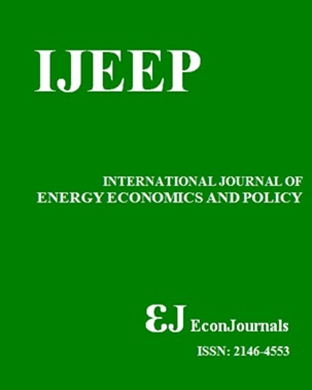Corporate Growth and Environmental Conservation: Evidence from Shizuoka Prefecture in Japan
DOI:
https://doi.org/10.32479/ijeep.14400Keywords:
EKC Hypothesis, Environment, Society, and Governance, Total Shareholders ReturnAbstract
This study explores how publicly traded corporations in Shizuoka Prefecture in Japan achieve corporate growth and environmental conservation. Data on financial performance and environmental impacts before, during, and after the COVID-19 pandemic of 22 entities from 2019 to 2022 were used for the analysis. This study is structured around three major points. First, the regression analyses identify a clear range of turning points (between JPY 0.818 and 0.922) that the 22 corporations should target in terms of scope 1 carbon dioxide emissions per employee and total shareholders return per employee (TSR/EMP) based on the Environmental Kuznets Curve (EKC) hypothesis. Second, the EKC hypothesis is established based on the deciding factors that result from the interaction of (1) enforcement of stricter emissions regulations, including penalties; (2) business and environmental organizations’ guidelines, ratings, and initiatives; (3) investors’ emphasis on the environment, social, and governance (ESG) concept; and (4) intrinsic or endogenous efforts of the corporations. These four points have been recently encouraged and prioritized in Japan. Third, an approach that focuses on ESG and TSR can contribute not only to the achievement of financial growth and environmental conservation but also to the expansion of the academic literature.Downloads
Published
2025-02-25
How to Cite
Tsujimoto, M. (2025). Corporate Growth and Environmental Conservation: Evidence from Shizuoka Prefecture in Japan. International Journal of Energy Economics and Policy, 15(2), 309–329. https://doi.org/10.32479/ijeep.14400
Issue
Section
Articles




